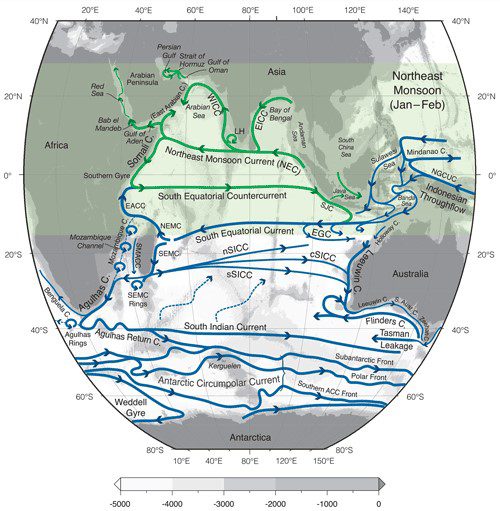Phillips, H. E. and Coauthors, 2021. Progress in understanding of Indian Ocean circulation, variability, air–sea exchange, and impacts on biogeochemistry. Ocean Sciences, 17, 1677-1751. doi:10.5194/os-17-1677-2021

Over the past decade, our understanding of the Indian Ocean has advanced through concerted efforts toward measuring the ocean circulation and air-sea exchanges, detecting changes in water masses, and linking physical processes to ecologically important variables. New circulation pathways and mechanisms have been discovered that control atmospheric and oceanic mean state and variability. This review brings together new understanding of the ocean-atmosphere system in the Indian Ocean since the last comprehensive review, describing the Indian Ocean circulation patterns, air-sea interactions, and climate variability. Coordinated international focus on the Indian Ocean has motivated the application of new technologies to deliver higher-resolution observations and models of Indian Ocean processes. Schematic shows near-surface circulation during the northeast monsoon (January-February). Blue (green) arrows indicate year-round mean flows with no seasonal reversals (monsoonally reversing circulation). Acronyms are as follows: EACC, East African Coastal Current; NEMC, Northeast Madagascar Current; SEMC, Southeast Madagascar Current; SMACC, Southwest Madagascar Coastal Current; WICC, West Indian Coastal Current; EICC, East Indian Coastal Current; LH and LL, Lakshwadeep high and low; SJC, South Java Current; EGC, Eastern Gyral Current; SICC, South Indian Countercurrent (south, central, and southern branches); NEC, Northeast Monsoon Current; SEC, Southwest Monsoon Current. The light grey shading shows seafloor bathymetry. [Adapted from Phillips et al. 2021]
